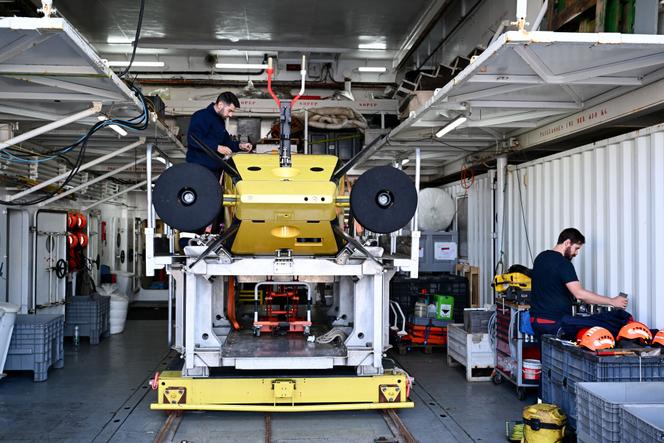More than 3,000 radioactive waste drums mapped in the Northeast Atlantic


A team of scientists has mapped 3,350 barrels of radioactive waste lying on the bottom of the Northeast Atlantic, without yet finding any abnormal radioactivity, they said on Friday, July 11, upon their return to Brest. Conducted aboard the French oceanographic fleet's ship L'Atalante , this expedition, dubbed Nodssum, aimed to map the main immersion zone of thousands of barrels of radioactive waste, dumped by European countries between 1946 and 1993.
These immersions were considered at the time a normal solution for managing waste from the nuclear industry. The mission explored a specific area located in international waters, 1,000 kilometers southwest of Brest and 650 kilometers northwest of La Coruña (Spain). The researchers were able to scan the area thanks to the very high-resolution sonar of the Ulyx autonomous submersible of the French Research Institute for Exploitation of the Sea (Ifremer), which carried out its first scientific mission on this occasion. In sixteen dives, Ulyx mapped 3,350 drums spread over 163 square kilometers.
Around fifty barrels were photographed in varying states of preservation, with a corroded surface colonized by anemones. "There are barrels that are almost intact and others that are extremely degraded," described Patrick Chardon, co-leader of the mission and nuclear metrology engineer (CNRS, Clermont Auvergne University).
Three hundred sediment samplesLeaks of unknown material, probably bitumen, were also observed on some drums. Radiation protection measurement tools reported values at the same level as the environmental background noise. "It's rather reassuring," acknowledged Mr. Chardon, "but we didn't expect to find very significant radioactivity, given the distances at which we operated."
The team included researchers from the National Centre for Scientific Research, the Institute for Development Research, and others from the University of Bergen (Norway), the Thunen Institute (Germany), and Memorial University of Newfoundland (Canada).
The 21 scientists collected more than 300 sediment samples from the mud 150 meters from the barrels. They captured 17 grenadiers, a fish that lives in the depths, and brought up 5,000 liters of water. These samples will undergo very detailed laboratory measurements in the coming months to assess their potential contamination by radioactive elements.
A second mission is to be organized within one or two years to get as close as possible to the barrels and collect marine organisms. Depending on the results, "we will be able to assess whether a more detailed assessment of these marine dumps is necessary in the future," the researcher emphasizes. Ultimately, the goal is not to bring these barrels up, which would be "technologically possible" but would come at an "absolutely monstrous cost," explains Mr. Chardon.
The 1993 London Convention banned the dumping of radioactive waste at sea. To date, more than 200,000 drums filled with radioactive waste have been dumped by several European states into the abyssal plain of the Northeast Atlantic Ocean, in international waters, at a depth of more than 4,000 meters. Germany, Belgium, France, Italy, the Netherlands, the United Kingdom, Sweden, and Switzerland participated in these dumps.
"We have no idea what was in it. There was no traceability at the time," Mr. Chardon emphasizes, adding that it would likely be low-level waste, such as laboratory waste, treatment sludge or contaminated pipes.
The empty space left in the drums was filled with cement or bitumen. Only the former USSR and the United States dumped other types of radioactive waste, such as nuclear reactor vessels, some of which contained nuclear fuel, according to the French National Agency for Radioactive Waste Management.
In June 1984, the Atomic Energy Commission and Ifremer had already carried out a photographic campaign on the same immersion zone in the North Atlantic, at a depth of 4,500 meters: six containers had been photographed and appeared intact, but with signs of corrosion.
The World with AFP
Contribute
Reuse this content




